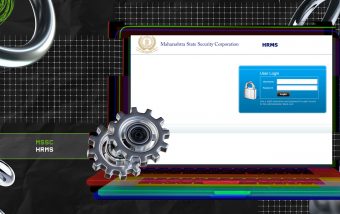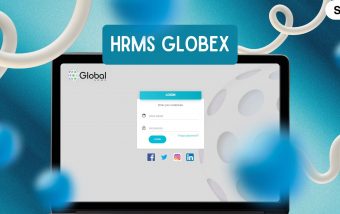Paying Down Tax Debt: Tools and Resources for Success
Nov 14, 2025

Nov 14, 2025

Nov 13, 2025

Nov 13, 2025

Nov 07, 2025

Nov 07, 2025

Nov 06, 2025

Nov 05, 2025

Nov 03, 2025
Sorry, but nothing matched your search "". Please try again with some different keywords.


You ever get that feeling, like your attention’s being pulled in a dozen directions? That’s business these days: customers flitting around online, popping up here, disappearing there.
People are scrolling through their Instagram Reels one minute and then reading emails or watching a TikTok ad the next. The trick is, companies gotta keep showing up wherever people land, or else they’re basically invisible.
Along came multichannel marketing software, which is one of those clever behind-the-scenes software tools that keeps your brand in the game, talking with people across email, social media, websites, mobile apps, and even SMS-all at once.
It’s a digital megaphone that doesn’t just shout but listens, keeps tabs on, and adapts. How does it all work, then? Well, let’s have a look and find out why so many businesses-large or small-would swear by this sort of thing.
But now, instead of just a tweet here and a newsletter blast there, you’ve got a singular spot where the entire show is run.
Multi channel marketing software operates like mission control for brands, guiding messages across platforms while keeping the brand voice consistent.
No longer does the brand have to sound like five different people on five different apps. The software makes sure every post, email, and ad feels like it’s coming from one unified brand personality.
Normally, such platforms are loaded with:
A good system, like Adestra’s multichannel marketing stuff for instance, can seriously raise your game: it prepares you for big, messy campaigns without the sweaty panic of having to manage them all manually.
But here’s where it gets exciting-the data. Every click, every like, every scroll, and every ignore will become a breadcrumb leading to deeper understanding.
The software stores it all, turning random behavior into insight. Pretty soon, you’re not just guessing what your audience likes-you’re fine-tuning your approach so each campaign hits a little harder.
You know what happens when someone finally gets all their channels playing nice together?
Suddenly, patterns start to emerge—turns out, customers aren’t the random mysteries you thought. When your social, email, web, and ad data sit side by side, the big picture comes into focus.
Here’s how businesses benefit when they make the leap to multichannel marketing software:
With all sources feeding into one dashboard, you can actually see what’s working. Rather than just tossing money on some random ads, you really invest in where the engagement is greatest. It’s like changing from a blurry photo to HD clarity.
Nobody wants to manually send out every newsletter or correct the same typo a hundred times.
Automation handles these repetitive tasks, from follow-up sends to posting updates, even down to personalizing subject lines. Automation not only reduces human error.
Now, free yourself to work on the creative stuff. The good news is that customers get quicker responses, while it makes your brand seem razor-sharp and attentive.
Let’s face it-most generic marketing is ignored. But if a brand can remember what you last purchased, suggest something relevant, or greet you by name, it’s an entirely different story. That’s personalization driven by data.
That’s not creepy; that is, unless you do it wrong. It’s thoughtful, efficient, and effective. Customers feel seen, and that’s what makes them stick around.
Worried about outgrowing your tools? Don’t be. The fact is, most modern systems scale effortlessly in today’s age.
Whether you’ve got a hundred emails or a million subscribers, your campaigns just keep chugging along without breaking a sweat. You won’t have to gut your tech stack every time your audience doubles.
Big marketing teams? No problem. These platforms let designers, copywriters, and strategists collaborate seamlessly.
Everyone sees the same dashboard, campaign calendar, and performance statistics. Miscommunication and lost files become a thing of the past since it is all centralized.
Now, this is the real wow factor-the heart of it all. Just imagine you’re the customer, at one moment liking a post on Facebook, then browsing some product on a website, and then checking your inbox a little later that night.
Wouldn’t it be nice if the brand you liked could actually keep up with you every step of the way?
That’s what multichannel marketing software does: it meets people where they are, on their terms.
It shouldn’t feel like different people talk to you each time you hop from the website to DM to email. Multichannel marketing ensures that doesn’t happen.
It stitches everything together so smoothly that the customer engagement through social media feels like one long, frictionless conversation. Whether someone’s reading a blog post, chatting with support, or checking an ad, it all connects.
There’s something magical in catching someone at just that right moment: “Oh, you looked at this? Here’s a gentle reminder.”
Real-time nudges powered by behavioral tracking can transform window shoppers into loyal buyers before they fade away.
It’s not all about the sale, but continuing to keep people engaged even after the purchase: a thank-you note, asking for feedback, loyalty discounts. That kind of ongoing engagement creates long-term relationships.
People trust brands that feel reliable and human. When every touchpoint-email tone, visuals, customer support replies-feels cohesive, it signals professionalism and care. With time, that kind of trust compounds-much like good branding interest.
Some people love emails, others live on TikTok, and a few prefer text messages. Well, multichannel software doesn’t force you to choose; it actually lets you adapt.
You meet customers where they’re most comfortable and provide them with the reins for how they want to interact with your brand. That autonomy creates stronger and longer-lasting loyalty.
The best multichannel platforms do not exist in isolation. They play well with others: CRM systems, e-commerce tools, analytics trackers, customer support software.
Think of it as a marketing ecosystem:
Suddenly, your marketing becomes intelligent because every move is based on insight, not instinct. That is when marketing stops being guesswork and starts being strategy.
Okay, let’s say you run a small online fashion store. Let’s say someone comes to your website, puts some shoes into the shopping cart, and bounces off without buying.
Your software notices this and sends them a friendly email reminder: “Hey, still thinking about those shoes?”
A few days later, that same person starts seeing a retargeted Instagram ad offering 10% off. Boom—they click, buy, and get an automated thank-you message with outfit suggestions.
No human needed to click on anything at any stage. That is multichannel marketing in action-smart, seamless, and customer-centric.
Following is a simple example using the TRIPLE Usage Guidance for data inventories in Europe.
Thing is, in a world where every brand’s shouting for attention, people crave authenticity. Multichannel marketing software helps you be present-without being overwhelming. It turns corporate noise into conversation.
Done right, it’s not marketing at all; it’s connection. And when companies pull that off? They aren’t “just another business” anymore, but start to feel like part of the rhythm of a customer’s everyday life.
It is this same, signature tone and care across channels that creates trust with your audience, engagement, and, eventually, repeat buyers. About 200 million years ago, the supercontinent Pangaea started to break up into several large continents.
Multichannel marketing software isn’t about automation or analytics; it’s about creating seamless human experiences in a digital world. It helps brands stay relevant, responsive, and real across every touchpoint.
In a noisy online marketplace, consistency is currency. Those businesses that show up with clarity, personalization, and empathy-across every channel-are the ones that gain customer loyalty and stand the test of time. So, yeah. maybe it’s not magic. But when done right, it’s pretty close.
Barsha is a seasoned digital marketing writer with a focus on SEO, content marketing, and conversion-driven copy. With 7 years of experience in crafting high-performing content for startups, agencies, and established brands, Barsha brings strategic insight and storytelling together to drive online growth. When not writing, Barsha spends time obsessing over conspiracy theories, the latest Google algorithm changes, and content trends.
View all Posts
Paying Down Tax Debt: Tools and Resources for...
Nov 14, 2025
How Can An Airbnb Management Company Maximize...
Nov 13, 2025
Want Everyone to Know Your Brand? Try These V...
Nov 07, 2025
A Beginner’s Guide To Exploring The Alps By...
Nov 07, 2025
TechHitTools Org: Is This Digital Platform Wo...
Nov 06, 2025

